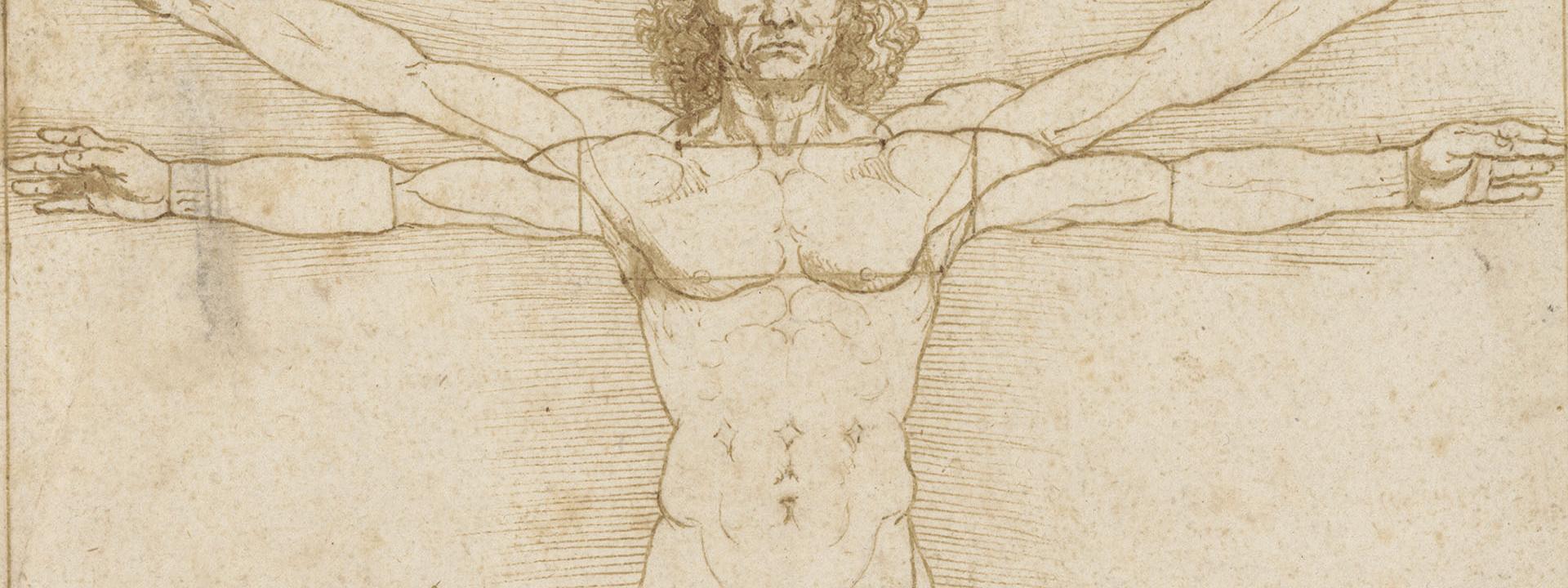DISPLAY AND CONSERVATION
To avoid deterioration, the drawing must be conserved in a light- and temperature-controlled environment. For this reason, drawings and prints are not always on permanent display.
Currently the drawing is not on display
STUDY OF THE PROPORTIONS OF THE HUMAN BODY, KNOWN AS THE VITRUVIAN MAN
Like all of Leonardo da Vinci’s drawings now held at the Gallerie dell’Accademia, this extraordinary example is from the collection of illustrations belonging to Giuseppe Bossi from Milan. From Bossi’s diary we learn that in 1807 he managed to acquire a large set of Leonardo drawings belonging to the De Pagave family who, in turn, had obtained the drawings from the countess Anna Luisa Monti, heir to cardinal Cesare Monti (1594–1650). In 1784, when the sheets were still the property of the De Pagave family, they were engraved and published by Carlo Giuseppe Gerli. The volume also contains drawings now in Venice, first and foremost amongst which the study of proportions generally known as Vitruvian Man.
The sheet can in all probability be dated to the years Leonardo spent in Milan, even though its destination remains in part mysterious. It is an extraordinary study of human proportions with an ideal figure in two different positions – with legs spread wide and with legs brought together – inscribed within the absolute forms of a circle and a square. Many are the meanings and possible readings inherent in the drawing. The circle and square, for example, have been used as symbolic representations of the sky and earth since the Middle Ages, and the presence of a human figure within them is an explicit illustration of the correspondence between macrocosm and microcosm.
Leonardo’s work was long thought to be a straightforward application of the theories of the Roman architect Vitruvius, who, in his De architectura, or The Ten Books on Architecture, imagined buildings as a transposition of correspondences between the various parts of a perfectly structured body. In fact recent scholarship has shown that the drawing is also testament to Leonardo’s reflections on the works of Leon Battista Alberti and Euclidean theory. The measurements and proportions he uses do not reflect Vitruvius’s text, which is nonetheless cited in the description that accompanies the drawing, but retrace the measurements analysed in Alberti’s De statua. It is very likely that Leonardo did not have first-hand knowledge of Vitrivius’s treatise, which was then only available in Latin, a language Leonardo was not familiar with. The heights attained by the Gallerie drawing are shared by a group of studies dedicated to the proportions of man, of which there are extremely interesting examples in the Venetian collection itself, in Turin, and in the royal collection at Windsor.

